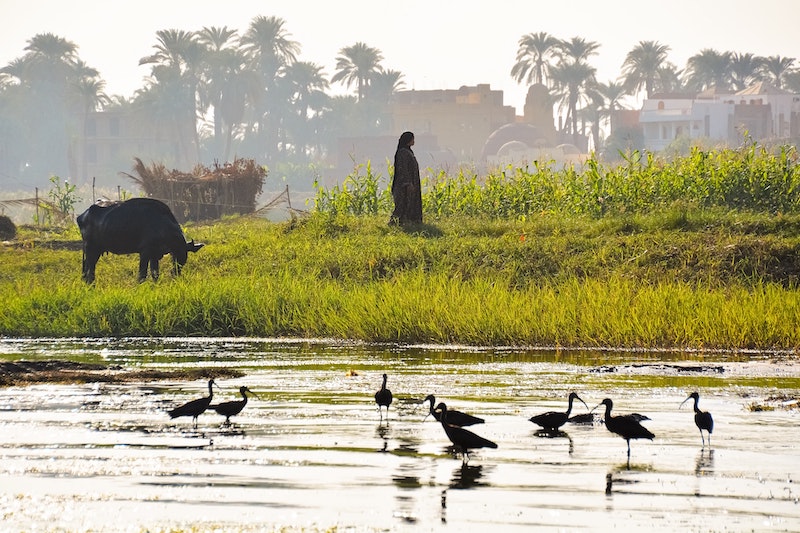Unravelling Egypt’s Water Crisis

The once bountiful Nile River in Egypt is the victim of overpopulation in the nation, now barely reaching the Mediterranean Sea. The Nile serves as the main supply of water in Egypt, a source that now seems to be quickly drying up. The construction and use of the Grand Ethiopian Renaissance Dam, or GERD, has dried the Nile River even further. The construction of the dam has received backlash from critics as it only exacerbates the depletion of the river even further, contributing to Egypt’s water crisis.
The combination of the dam, growing population and an ongoing drought leaves Egypt with the threat of complete water scarcity by 2025, putting the livelihoods of millions of farmers in danger. According to the World Bank, Egypt’s agriculture sector employs about a quarter of the 102.3 million population, with agriculture, forestry and fishing accounting for about 11% of the country’s GDP in 2020.
This, in turn, threatens the food supply of Egypt, further impoverishing an already impoverished country with a poverty rate of 32% as of 2020. Egypt’s water crisis has reached a dire point.
Causes of Egypt’s Water Crisis
Long periods of drought and an increasingly hot and arid climate have shrunk the Nile River, the main source of water in Egypt, an issue common for many water supplies all over the world. However, in development mostly unique to Egypt, the construction of a dam on the Nile River has shrunk the amount of available water even further.
The GERD has placed a large amount of strain on the already dwindling supply of water in the country. The GERD, completed in 2020, is the latest development in a dispute over the Nile’s fresh water basin, a water source essential to the survival of many Middle Eastern and North African countries. Ethiopia now appears to have the upper hand in this dispute, with the GERD granting Ethiopia access to a fairly stable amount of water, while restricting the access of other countries, including Egypt.
However, the most significant contributor to Egypt’s water crisis is the country’s population growth. Egypt’s population increases at a rate of around 2% per year. While that number may not sound like much, the constant and steady growth places a lot of stress on an already low amount of usable water. There is simply not enough to go around. The United Nations estimates that Egypt will reach the point of absolute scarcity by the year 2025, which many fear may mark the point of no return for the African nation.
The Impact of Water Scarcity
Beyond the obvious impact of Egypt’s water crisis on the everyday lives of people living within the country, the lack of water will cause large amounts of damage to Egypt’s food supply. The agriculture industry of the country supports nearly 50% of the nation’s population and uses 86% of the fresh water in Egypt, as of 2020. If Egypt were to reach the state of absolute scarcity, millions of people would be out of work, forcing a large portion of Egypt below the poverty line, not to mention the food insecurity that would also occur. In a country already struggling with poverty, less food and less water would only serve to make matters worse.
Taking Action
The Egyptian government is working to address Egypt’s water crisis. These efforts include the passing of the National Water Resources Plan in 2017 with an intention to contribute $50 billion worth of investments in the water sector by 2037. In 2020, Egypt committed to contributing $2.8 billion to increase its desalination capacity, so that it can convert greater amounts of salt water into fresh water. This offers a great renewable source of water. This combination of efforts offers some hope to the nation.
Egypt relies on aid from other countries and organizations around the world as well, remaining optimistic that help will come.
– Thomas Schneider
Photo: Unsplash
